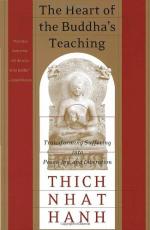
|
| Name: _________________________ | Period: ___________________ |
This test consists of 15 multiple choice questions and 5 short answer questions.
Multiple Choice Questions
1. The Buddha said, "The moment you know how your suffering came to be, you are already _________________."
(a) Passing your suffering on to others.
(b) Ignoring it.
(c) Gaining more suffering.
(d) On the path of release from it.
2. Right Action means to do what?
(a) The ways that everyone should act.
(b) Everything connected with the body nonviolently and in mindfulness.
(c) The behavior of Buddhists.
(d) Everything connected with the body.
3. Another misunderstanding is that our suffering is caused by ________________.
(a) Love.
(b) Craving.
(c) Sin.
(d) Buddha.
4. What is the second turning?
(a) Ignorance.
(b) Encouragement.
(c) Realization.
(d) Acceptance.
5. Generosity, sharing, cultivating love and kindness, and living simply, taking no more than our share, is what?
(a) Right Diligence.
(b) Right Action.
(c) Right Thinking.
(d) Right Concentration.
6. Looking deeply into our suffering and writing down what nutriments we are feeding to sustain takes what?
(a) Courage and strength.
(b) Patience and self-control.
(c) Meditation and patience.
(d) Courage and mindfulness.
7. Right Diligence or Effort involves what?
(a) Focusing on Right Thinking.
(b) Preventing unwholesome seeds and returning them, finding ways to water and nourish the wholesome seeds that have already risen.
(c) Acting appropriately.
(d) Watching the behavior of others.
8. Non-thinking allows us to enter reality __________.
(a) Slightly.
(b) Fully.
(c) Almost completely.
(d) Partially.
9. What is the Third Miracle of Mindfulness?
(a) To make others present.
(b) To nourish others.
(c) To be present.
(d) To nourish yourself.
10. The Buddha said, "My teaching is like a finger pointing to the moon. Do not mistake _______ ."
(a) The finger for the moon.
(b) My teaching for pointing.
(c) The moon for the finger.
(d) The pointing of the finger.
11. Recognition of peace and joy, that well-being is possible, is which turning?
(a) The first.
(b) The fourth.
(c) The third.
(d) The second.
12. To whom does the author suggest going and showing your pain?
(a) The Buddha.
(b) Your parent.
(c) Yourself.
(d) God.
13. Buddha said we feed our happiness or suffering with how man nutriments?
(a) Two.
(b) Four.
(c) Three.
(d) One.
14. Another reminder, "Hello, habit energy," reminds us to do what?
(a) Change our habits.
(b) Improve our habits.
(c) Forget our habits.
(d) Find moments to contemplate and be mindful, and acknowledge our habitual thinking and acting.
15. What is active concentration?
(a) We accept some of what comes our way.
(b) Focusing on one object, ignoring everything else.
(c) We accept little of what comes our way.
(d) We accept whatever comes along, dwelling in the present and remaining clear.
Short Answer Questions
1. Right Speech is speaking how?
2. The therapy of one hour of deep, quiet listening can bring relief to suffering, and is what who try to practice?
3. Hanh recommends a _____________ gatha to remind us to live fully each day, not wasting our day, and being mindful with love and compassion.
4. What is Smriti?
5. What is the fourth nutriment?
|
This section contains 494 words (approx. 2 pages at 300 words per page) |

|




